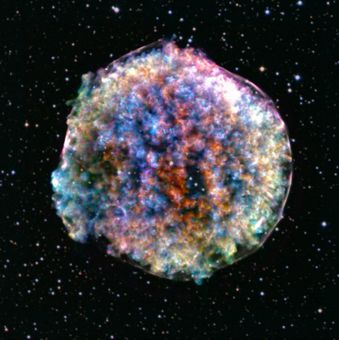2020 Online Astronomy Institute - Module 2 and 3
2 Module Savings: From Pinholes to Space Telescopes and Romancing the Moon. See details below
Module 2: From Pinholes to Space Telescopes
(Registration closes September 15, 2020 for Module 2 and Module 2&3 Options)
Explore what pinhole viewers and giant telescopes have in common through using lenses to construct a basic model of a telescope. Optical systems - like eyes, cameras, microscopes and telescopes - use lenses (and sometimes mirrors) to collect light and form images of distant objects. What do all these optical systems have in common? Light has to enter some kind of “hole” first.
In this module, we will examine the importance of pinholes and lenses in optical systems. Scaffolded explorations of the properties of both light and lenses will help develop a more complete understanding, culminating in the construction of a simple refracting telescope.
Appropriate for teaching grade levels 3-12.
Dates: October 6 - November 5, 2020
Times: Four live sessions on Tuesdays (October 13, 20, 27, and November 3), 4-5pm Pacific Time (7-8pm Eastern)
NGSS focus:
4-PS4-2: Develop a model to describe that light reflecting from objects and entering the eye allows objects to be seen.
MS-PS4-2: Develop and use a model to describe that waves are reflected, absorbed, or transmitted through various materials.
Details: Each module lasts five consecutive weeks, with 1-hour Zoom webinars offered weekly for four of these weeks. We use Google Groups to communicate and share documents. Each module includes a Materials Kit that will be shipped directly to you at the Shipping Address you provide during Checkout. Please note: Shipping is included for the Continental U.S. If your ship-to address is Hawaii, Alaska, Puerto Rico, or International, we will contact you with the additional shipping fees.
Before the first and between the webinar sessions, you’ll engage in activities on your own time, including posting ideas and opinions in an online forum and engaging in assignments and activities related to the content. You’ll also get a chance to try out the activities with your classes between the webinars and share your experiences.
Academic credits: Up to two semester units of academic credit available through The University of the Pacific for participants completing all six modules. Those completing three modules are eligible for one semester unit of academic credit.
Module 3: Romancing the Moon
Of all the phenomena associated with the Moon,solar eclipses are the most rare. On August 21, 2017, the Moon passed directly in front of the Sun, a phenomenon viewable throughout the country! While the path of the total solar eclipse passed through many states coast to coast, the rest of the country was able to view a partial solar eclipse. Lunar eclipses, while also relatively rare, are viewable over a much wider area. Why is that?
In this module, you’ll learn how you can take advantage of these spectacular teachable moments, and engage your class and community in investigating and experiencing eclipses, and other phenomena associated with the Moon.
Workshop sessions will actively engage participants in an NGSS storyline approach to understanding the how and why of both solar and lunar eclipses. Scaling and modeling the Sun-Earth-Moon system is essential to an understanding of many of these phenomena.
Appropriate for teaching grade levels 3-12.
Dates: November 17 - December 18, 2020
Times: Four live sessions on Tuesdays (November 24, December 1, 8, and 15), 4-5pm Pacific Time (7-8pm Eastern)
NGSS focus:
1-ESS1-1: Use observations of the sun, moon, and stars to describe patterns that can be predicted.
5-ESS1-2: Represent data in graphical displays to reveal patterns of daily changes in length and direction of shadows, day and night, and the seasonal appearance of some stars in the night sky.
MS-ESS1-1: Develop and use a model of the Earth-sun-moon system to describe the cyclic patterns of lunar phases, eclipses of the sun and moon, and seasons.
Details: Each module lasts five consecutive weeks, with 1-hour Zoom webinars offered weekly for four of these weeks. We use Google Groups to communicate and share documents. Each module includes a Materials Kit that will be shipped directly to you at the Shipping Address you provide during Checkout. Please note: Shipping is included for the Continental U.S. If your ship-to address is Hawaii, Alaska, Puerto Rico, or International, we will contact you with the additional shipping fees.
Before the first and between the webinar sessions, you’ll engage in activities on your own time, including posting ideas and opinions in an online forum and engaging in assignments and activities related to the content. You’ll also get a chance to try out the activities with your classes between the webinars and share your experiences.
Academic credits: Up to two semester units of academic credit available through The University of the Pacific for participants completing all six modules. Those completing three modules are eligible for one semester unit of academic credit.
Other Savings Module Options:
Module 1,2 - Module 1,3 and Modules 1,2, and 3
Registration Deadlines:
Registration closes August 15 for Modules 1, 1&2, 1&3 and 1,2 & 3 options
Registration closes September 15 for Module 2 and Module 2&3 Options
Registration closes October 15 for Module 3 Option


